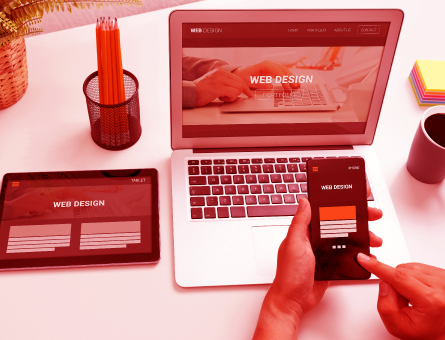Rapid software product development has become increasingly popular in recent years as businesses look for ways to get their products to market faster and stay ahead of the competition. This approach involves using agile methodologies and leveraging modern software development practices to iterate and evolve products rapidly.
Let us understand a few valuable concepts in rapid software development:
Microservices based architecture
One key concept of rapid software product development is a microservices-based architecture. This approach involves breaking down an extensive monolithic application into more minor, more modular services to develop, deploy, and scale independently. It allows teams to work on different application parts simultaneously, speeding up development and deployment cycles.
API-driven architecture
Another essential concept in rapid software product development is an API-driven architecture. It involves designing software products with well-defined and well-documented APIs that other applications and services can easily consume. This approach allows teams to build on top of existing functionality, reducing development time and accelerating time-to-market.
Iterative development
Iterative development is another critical component of rapid software product development. This approach involves continuously refining and improving a product through small, incremental changes. By releasing early and often, teams can gather user feedback and make adjustments quickly, allowing them to improve the product rapidly.
Fast prototyping
Fast prototyping is another crucial concept in rapid software product development. It involves quickly building and testing prototypes of new features or products to validate assumptions and gather feedback. By iterating on prototypes rapidly, teams can refine and improve their ideas before investing significant time and resources in full-scale development.
Product engineering
Product engineering is designing, developing, and testing software products. In rapid software product development, product engineering happens iteratively and in short cycles, allowing teams to respond quickly to feedback and changes in the market.
Rapid prototyping is quickly building and testing prototypes of new features or products. In rapid software product development, rapid prototyping is a critical component of the iterative development process. By creating and testing prototypes quickly, teams can refine their ideas and gather feedback before investing significant time and resources in full-scale development.
Application of rapid software product development in eCommerce
eCommerce has become increasingly competitive, with businesses striving to provide better user experiences, faster delivery, and lower prices. To stay ahead of the competition, eCommerce companies must develop and launch new products quickly.
Let us explore some strategies for rapid software product development in eCommerce
- Agile Development
Agile development is a methodology that emphasizes collaboration, flexibility, and rapid iteration. It involves breaking down the development process into smaller, more manageable chunks, known as sprints. Each sprint typically lasts two to four weeks and results in a functioning piece of the product. Agile development allows for more frequent feedback and helps identify and fix problems early in development. This approach is beneficial in eCommerce, where quick product launches are necessary to stay ahead of the competition.
2. Continuous Integration and Delivery
Continuous integration and delivery (CI/CD) is a software development practice that involves continuously testing, integrating, and delivering code changes. This approach helps catch errors and bugs early in the development process and ensures that new code regularly incorporates into the main codebase. By automating the testing and delivery process, eCommerce companies can speed up their software development and release new products quickly.
3. Minimum Viable Product
A minimum viable product (MVP) is a version of a product that includes only the essential features necessary to test the product’s viability in the market. An MVP can help eCommerce companies launch new products quickly and gather customer feedback. By focusing on the core features of a product and releasing it quickly, eCommerce companies can identify and prioritize the most critical elements for future releases.
4. User-Centered Design
User-centered design (UCD) is an approach to product development that focuses on understanding the needs and behaviors of users. By involving users in the design process and gathering feedback early and often, eCommerce companies can create more user-friendly products that meet their target audience’s needs. This approach can reduce development time and improve the success of new product launches.
5.Outsourcing
Outsourcing software development can be an effective way for eCommerce companies to speed up their product development. Outsourcing allows companies to access a broader range of expertise and resources without hiring full-time employees. By outsourcing software development, eCommerce companies can quickly scale their development efforts and launch new products faster.
Conclusion
Rapid software product development is a powerful approach that can help businesses stay ahead of the competition by quickly iterating and evolving their products. By using modern software development practices like microservices-based architecture, API-driven architecture, iterative development, and fast prototyping, teams can build better products faster and more efficiently.


